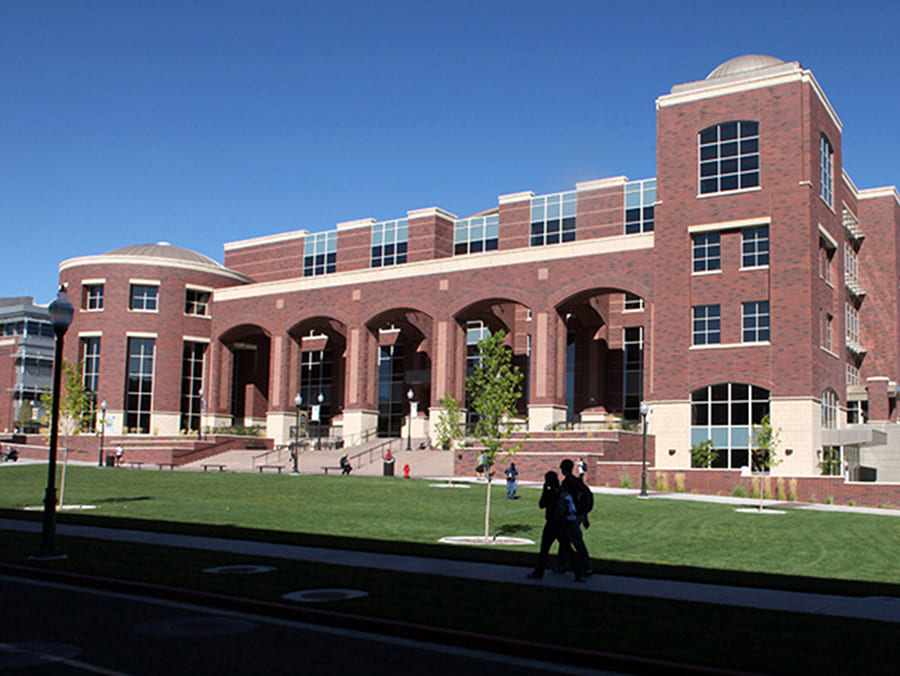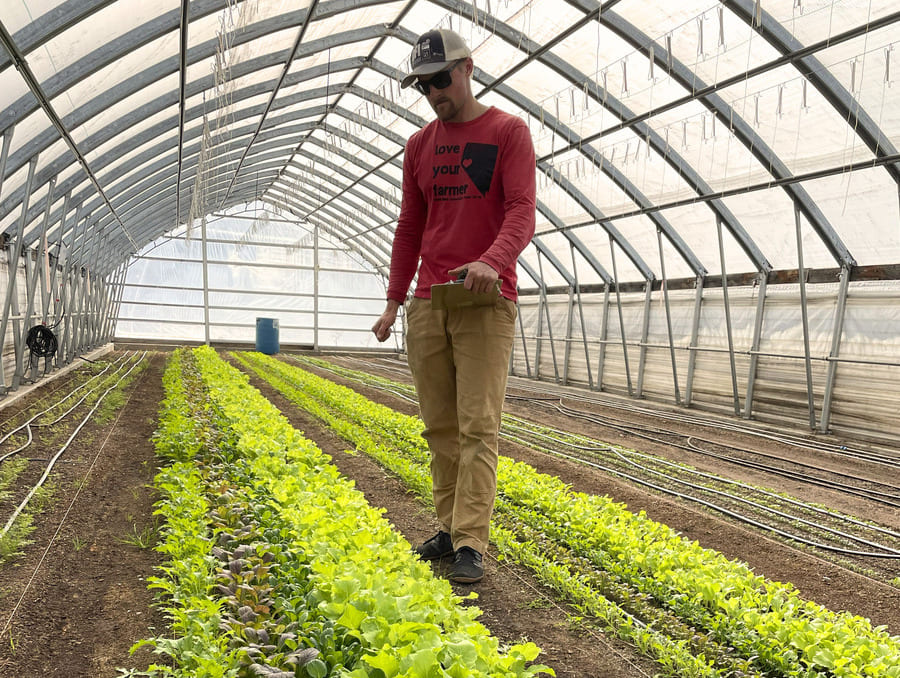An estimated 30 police canine teams from around the country are sniffing around campus this week. They are participating in a national explosives and odor recognition testing and training seminar for police dogs and their handlers being hosted by the University of Nevada, Reno Police Services and the International Police Work Dog Association.
“Hosting this training at the University is an honor and a testament to our department,” University Police Chief Adam Garcia said. “By virtue of the fact that the ATF and International Police Work Dog Association have worked with us in the past, they are aware of the professionalism and high standards we abide by and they have asked us to be the host for this important training.”
University of Nevada, Reno Police Officer Tom Emmons, with his dog Turner, and ATF canine trainer Cody Monday, with the Canine Training and Support branch of the ATF, fielded local media questions Tuesday about how the dogs train and test to be certified explosive detecting dogs. Emmons has been working on campus with his partner Turner, a friendly happy-go-lucky yellow lab, since 2006. The four year old Turner will be getting recertified this week as an explosive detector dog.
“Turner is an ATF trained dog so we are called upon to assist in many situations off campus,” Emmons said. “On campus we do open area sweeps and building sweeps when we have visiting dignitaries or if something suspicious is reported. For example, we’d do a sweep for explosives for a potential controversy like when two former PLO members came to campus to speak.”
Emmons said the work on campus for Turner is just a small slice of what they do. The team assists other local agencies for weapons searches or bomb threats. For example, they were put to work searching buildings and vehicles related to the sniper shooting at the Mills B. Lane Justice Center in 2006.
The testing and training on campus includes searches of buildings, luggage, open areas and vehicles as well as problem solving exercises and new odor introductions by ATF chemists. ATF canine trainer Cody Monday and his team scattered smells through the University’s Getchell Library building, Lawlor Events Center, a lecture hall and various outdoor locations as a part of the Explosives Detection Canine certification and odor recognition tests.
To earn ATF certification the dogs must successfully detect 20 different explosives odors, two of which they were never exposed to during training. Turner and Emmons work out everyday to hone their skills
For the test, the ATF uses as many as fifteen empty paint cans lined in a row or a circle, some planted with traces of explosives, others scent-free. The canine must be capable of identifying and alerting on the six families of explosives, which can be mixed to form 19,000 potentially lethal combinations.
The purpose of the training and certification in ATF's Explosives Detection Canine Program is to make sure there is a consistent standard of performance and that the trained canines are proficient at finding trace chemicals found in virtually all explosives, Officer Emmons said.
Participants in the week long western region seminar came from Oklahoma, Texas, Washington, California and other states around the country.















